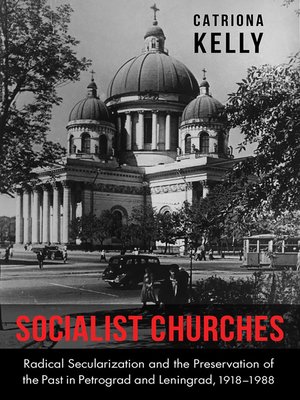Socialist Churches
ebook ∣ Radical Secularization and the Preservation of the Past in Petrograd and Leningrad, 1918–1988 · NIU Series in Slavic, East European, and Eurasian Studies
By Catriona Kelly

Sign up to save your library
With an OverDrive account, you can save your favorite libraries for at-a-glance information about availability. Find out more about OverDrive accounts.
Find this title in Libby, the library reading app by OverDrive.



Search for a digital library with this title
Title found at these libraries:
| Library Name | Distance |
|---|---|
| Loading... |
In Russia, legislation on the separation of church and state in early 1918 marginalized religious faith and raised pressing questions about what was to be done with church buildings. While associated with suspect beliefs, they were also regarded as structures with potential practical uses, and some were considered works of art. This engaging study draws on religious anthropology, sociology, cultural studies, and history to explore the fate of these "socialist churches," showing how attitudes and practices related to them were shaped both by laws on the preservation of monuments and anti-religious measures.
Advocates of preservation, while sincere in their desire to save the buildings, were indifferent, if not hostile, to their religious purpose. Believers, on the other hand, regarded preservation laws as irritants, except when they provided leverage for use of the buildings by church communities. The situation was eased by the growing rapprochement of the Orthodox Church and Soviet state organizations after 1943, but not fully resolved until the Soviet Union fell apart. Based on abundant archival documentation, Catriona Kelly's powerful narrative portrays the human tragedies and compromises, but also the remarkable achievements, of those who fought to preserve these important buildings over the course of seven decades of state atheism. Socialist Churches will appeal to specialists, students, and general readers interested in church history, the history of architecture, and Russian art, history, and cultural studies.







